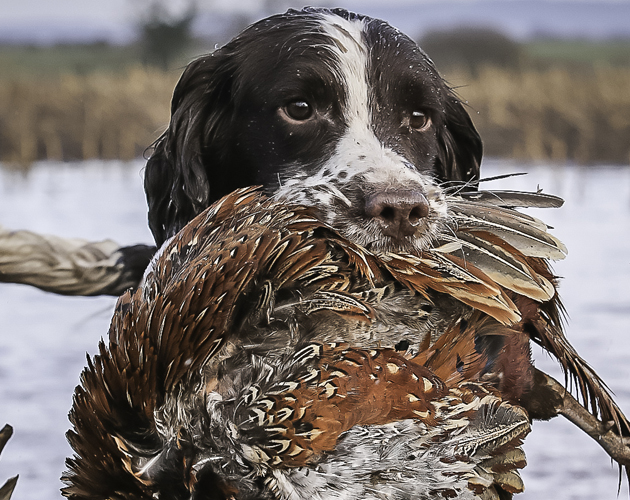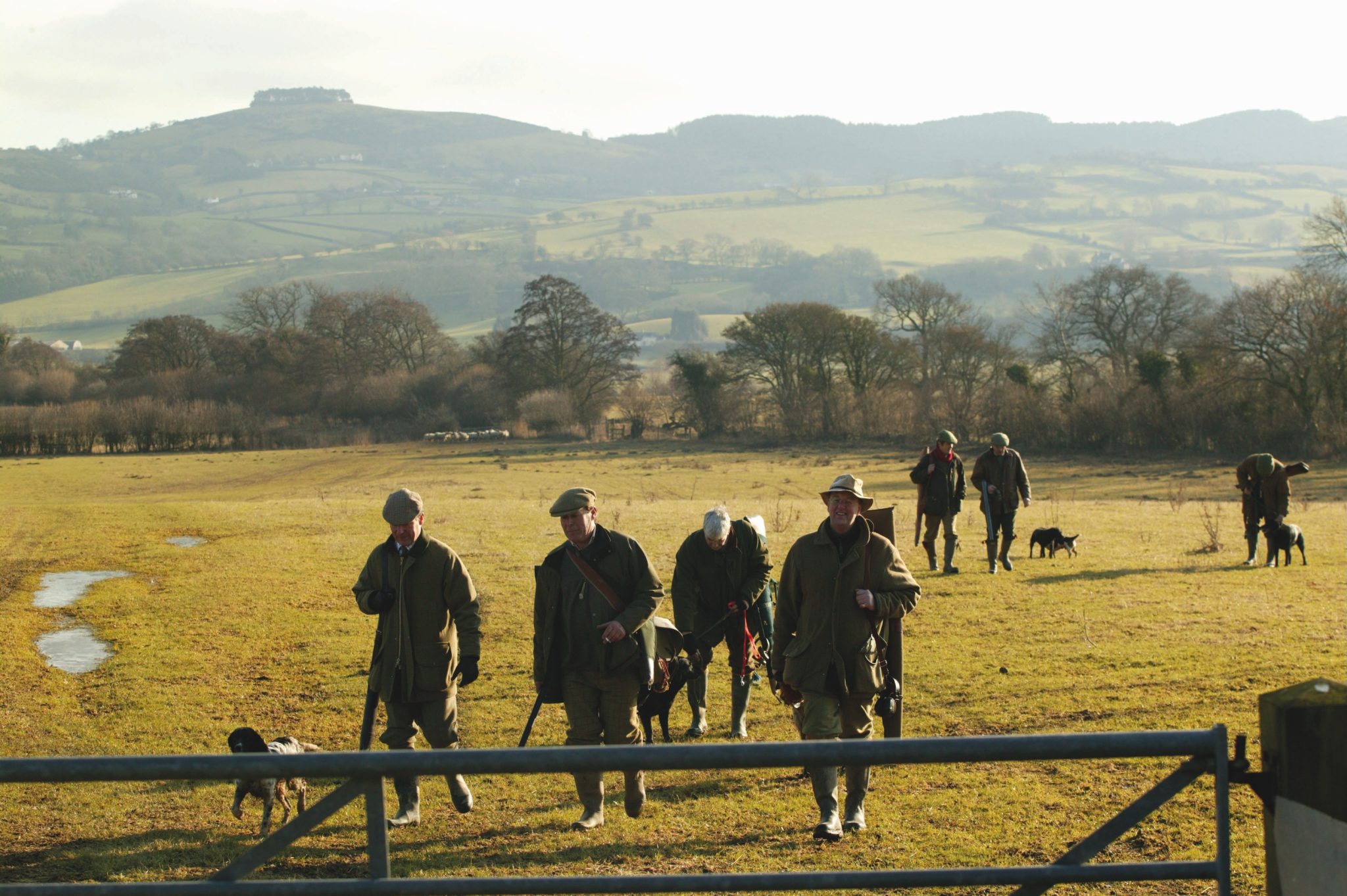Win CENS ProFlex DX5 earplugs worth £1,149 – enter here
Why dry food is best for gundog nutrition

By Justin Clarke
According to the Pet Food Manufacturers’ Association (PFMA), the UK pet food business is estimated to be worth £2bn each year. Given the amount of cash involved, it will come as no surprise that companies spend large amounts of money in an attempt to gain a higher market share. Each brand will give reasons as to why pet owners should use their product, particularly when it comes to the working dog sector. It is no wonder, then, that there tends to be considerable confusion amongst some gundog owners when it comes to the question of what to feed their charges.
As with training, there can be a great deal of conflicting advice on what to do and how to do it. However, as with training, it is simply a case of what works for you; or in this case, what works for your canine companion. There can be no better barometer of health than your dog itself. Areas of focus such as teeth, coat, skin, weight, muscle tone, waste and stamina are all key indicators of health. If your dog shows good character with all of the aforementioned, then why change? However, should there be a question mark over any of these areas, then perhaps a change or partial change in diet should be considered.
Before considering the dietary needs of your dog, other areas will also have to be taken into account. Factors such as the number of days a week your dog works, age and your own personal lifestyle will all need to be analysed. Once these have been recognised there are many different types of food and brands to choose from, all with differing pricing structures and, more importantly, ingredients.

Salmon oil is a key ingredient that helps maintain a dog’s condition – crucial after a long, wet day in the field. Credit: Andy Biggar
For simplicity, these can be split into two categories. The first category is natural foods such as the so-called BARF diets (bones and raw flesh). The second are modern complete dry foods with their array of various sub-divisions such as working, maintenance, senior, puppy and so on.
Both categories have their own merits, with many high-profile handlers using one or the other (and sometimes both) while enjoying success with their respective breeds. With this in mind, I spoke with three of the UK’s leading gundog personalities to try to establish what and how they fed their dogs.
You basically get what you pay for
Ian Openshaw and his wife Wendy run the renowned Rytex Kennels and have made up an astonishing 111 field trial champions between them. Ian explained that all of his trial dogs are fed on a combination of natural food and a high-end, good quality dry food. Ian feels it is important to vary the diet in this way for nutritional reasons, as well as to give his dogs some variation on a day-to-day basis. His choice of natural food is tripe.
When it comes to dry food it is all about quality, which he says always comes at a price. He says: “It is like someone employing you or I to make a cake, hence you will end up with one outcome. Give the job to a professional chef and you will get something far superior. The same goes for complete dry foods; you basically get what you pay for.”
Ian also suggests that a good measure of this is the amount of soiling that can occur in the kennel after feeding. Generally speaking, the less mess, the better the food. He feeds once a day in the summer and twice a day in the colder months. However, he is keen to point out that all dogs should be treated individually.
Quality rather than quantity
John and Sandra Halstead of Drakeshead Labradors have made up more than 30 field trial champions and have won the retriever championships five times. John says they mainly feed a complete dry food, although this is supplemented with raw chicken carcasses. They feed twice a day apart from when they are on the road trialling. A change in the amount fed will depend upon the amount of work their dogs are doing, along with the weight and fitness of each animal. Quality rather than quantity is a phrase that John uses.
He says: “In Lancashire they have a saying that you cannot pour water into a kettle that is already full. That is to say if you are feeding a well-balanced diet, you do not need to feed too much in order to obtain the desired effect.” John also makes a valid point in saying you can tell a lot about the health of your dog by the firmness of its stools – basic common sense that is often overlooked.
Time of year affects portion control
Ben Randall, professional gundog trainer and proprietor at Beggarbush Gundogs won both the 2011 and 2012 Cocker Spaniel Championships with his FTCh Heolybwlch Fatty. Ben has a special interest in nutrition because he also caters for a dog boarding business where he feeds up to 60 dogs a day at peak times. This commitment has led him to take the unusual step of creating and manufacturing his own special formula of dry food.
Ben says: “The most important aspect for me is having the best quality ingredients, which must include a natural source of protein. We only use salmon oil – this leads to a much higher conversion rate of protein being turned into energy, without over-exciting them.”
The only supplement that Ben uses is additional salmon oil. He explains that this helps maintain the condition of the dogs, including both the skin and coat, thus allowing them to recover more quickly when it comes to those long, cold and wet shoot days. Feeding twice a day, he keeps to the same diet all year round, although adjusts the amount fed, depending on the time of year.
With much common ground between them, the views from all three kennels are that ‘quality’ complete dry foods do play an important role. Equally, all supplement their feeding regimes with natural sources of food/ protein.
The author’s perspective
Personally, I believe there can be no better example than the foxhound. This breed probably covers more ground during a day’s hunting than any other, so stamina and condition are vital. All have one thing in common: the vast majority of packs (although not exclusively) are fed on a natural diet of fallen stock.
For me, as with my colleagues, combining a good quality dry food together with a natural animal product such as chicken carcasses, tripe or similar would seem to equate to a canine Michelin Star.
More importantly, whatever diet you feed should be monitored regularly by observing the seven key indicators of health. Adjustments should be made to reflect any changes. This may simply be a case of increasing or lowering the quantity to reflect the work ratio. On the other hand, it may be a case of changing the menu completely. If so, as any responsible gundog owner will tell you, it must be done gradually. Finally, I would never hesitate to contact a vet, should any concerns arise or persist.
Justin Clarke has produced both field trial winners and champions over the last 10 years. Based in East Sussex, he regularly judges field trials and working tests. He is also the regional officer for BASC in the South East.
Related Articles
Get the latest news delivered direct to your door
Subscribe to Shooting Times & Country
Discover the ultimate companion for field sports enthusiasts with Shooting Times & Country Magazine, the UK’s leading weekly publication that has been at the forefront of shooting culture since 1882. Subscribers gain access to expert tips, comprehensive gear reviews, seasonal advice and a vibrant community of like-minded shooters.
Save on shop price when you subscribe with weekly issues featuring in-depth articles on gundog training, exclusive member offers and access to the digital back issue library. A Shooting Times & Country subscription is more than a magazine, don’t just read about the countryside; immerse yourself in its most authoritative and engaging publication.







